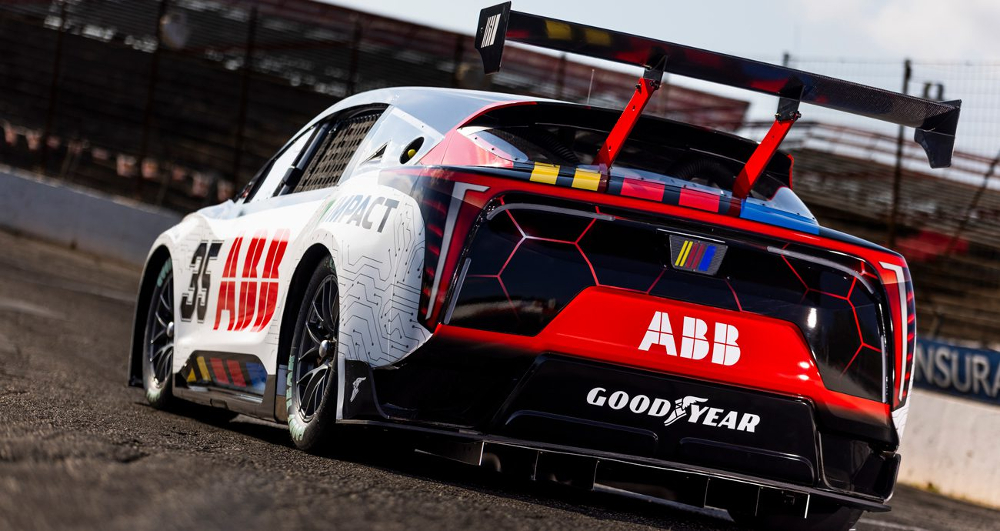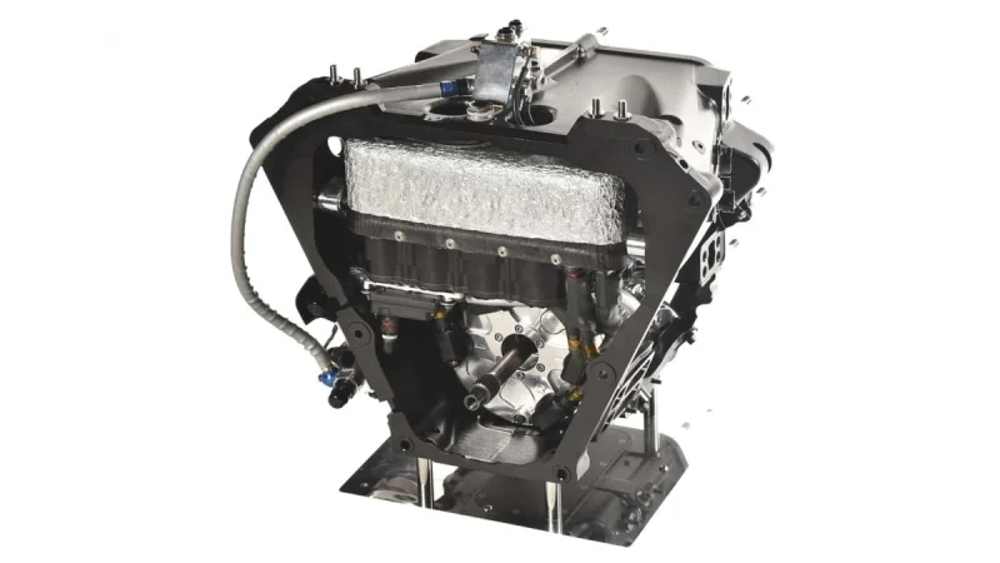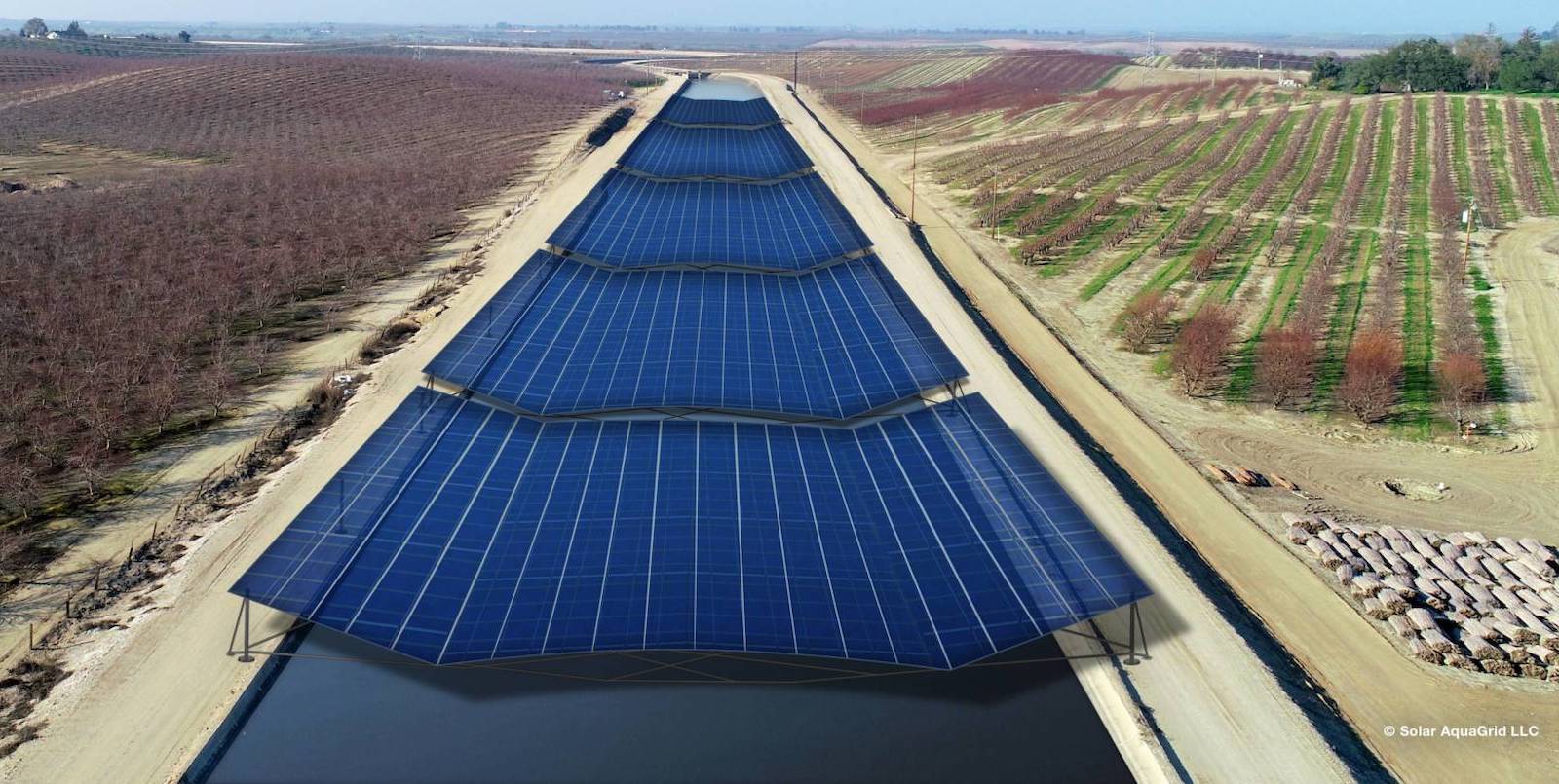Sign up for daily news updates from CleanTechnica on email. Or follow us on Google News!
NASCAR has its roots deep in the legends of the epic battles between moonshiners and revenue agents in Appalachia. Some of that outlaw culture persists to this day, although the legend has been polished up quite a bit by movies like CARS. Some older readers may recall that in 1995, when America became obsessed with pickup trucks, NASCAR created the Craftsman Truck Series, although it never attracted anywhere near the audience as the original series. This weekend in Chicago, NASCAR unveiled a prototype battery-electric car that may (or may not) lead the way to a dedicated racing series for battery-powered cars.
The motivation is clear. While NASCAR is committed to the historic role of the internal combustion engine in racing, it is also working to decarbonizing its operations and reducing its own carbon footprint to zero across its core operations by 2035. “There could not be a more optimal moment in time to announce our first Impact partner than in tandem with the debut of the ABB NASCAR EV Prototype at the Chicago Street Race,” said Eric Nyquist, NASCAR senior vice president and chief impact officer. (We have no idea what a chief impact officer does. At CleanTechnica, Zachary Shahan comes as close as anyone to that job description.) “ABB is an industry leader and will help in efforts to decarbonize our operations as we pursue achieving net-zero operating emissions over the next decade.”
The ABB NASCAR EV Prototype is the latest innovation from the NASCAR research & development team. The prototype was developed in collaboration with NASCAR’s OEM partners — Chevrolet, Ford, and Toyota — and was built by the NASCAR engineers responsible for the Next Gen car and the Garage 56 entry into the 24 Hours of Le Mans. Throughout the process, NASCAR and the OEMs collaborated on the design and elements of the vehicle.
NASCAR Impact Electric Car

The track-tested, electric car prototype has three STARD UHP 6-Phase motors (one front, two rear) supplying power directly to all four specially designed Goodyear Racing Eagle tires. It features a 78 kWh liquid cooled battery and its tunable powertrain can produce up to 1,000 kW (1340 hp) of peak power. That is about double the power of a current NASCAR engine. Regenerative braking converts kinetic energy into power, making the car ideal for road courses and short oval tracks.
The all-wheel drive car has a generic crossover utility vehicle body made of sustainable flax-based composite (an idea similar to one Henry Ford had 80 years ago) and shares many similarities with both the Next Gen and Garage 56 cars. The body sits on a modified Next Gen chassis, and the steering, suspension, brakes, and wheels all derive from the NASCAR Cup Series car.
ABB is the first official partner of NASCAR Impact program, which supports NASCAR’s mission to strengthen its communities and contribute to a healthier planet. “ABB is a technology leader in electrification and automation, and we help customers globally to optimize, electrify, and decarbonize their operations,” said Ralph Donati, ABB executive vice president. “The objective of the collaboration between NASCAR, ABB in the United States, and the NASCAR industry is to push the boundaries of electrification technology, from EV racing, to long haul transportation, to facility operations.” As part of the partnership, ABB in the United States will also help NASCAR achieve public sustainability targets around electrification and electric vehicle charging.
NASCAR’s long term emissions reduction goal includes sourcing 100% renewable electricity at the race tracks and facilities it owns by 2028, expanded waste diversion efforts, and on-site EV charging stations. ABB will play a critical role in helping NASCAR by providing valuable guidance, equipment, and support in electrifying key elements of the operational business.
The electric car prototype is also an opportunity to open minds to what could be something exciting in the future. NASCAR’s own research with fans indicates that many are curious to know more about electric vehicles and could see EV racing as a way to learn about them, John Probst, NASCAR’s senior vice president for racing development told CNN. Once fans see the speed and excitement of an electric cars, which can be more powerful and faster than gas cars, he thinks even the most anti-EV fans will drop some of their objections.
Eric Warren, who heads global motorsports competition for General Motors, said market research showed more than half of NASCAR fans surveyed would be more interested in purchasing an electric vehicle if they were exposed to it through racing. A main message is taking care with energy and optimizing it, he said. “We’re committed to electric vehicles. Racing gives a great platform to discuss a lot of those concepts and educate fans. It’s a laboratory for us to try some new technologies and learn as we educate,” he told the Associated Press.
IndyCar Ultracapacitor-Powered Drivetrain

Formula One pioneered race cars that combined internal combustion engines with batteries and electric motors a decade ago. Now IndyCar is about to follow down the same path, although its drivetrain will feature supercapacitors rather than batteries. The hybrid unit fit neatly inside the existing chassis from Dallara, and works with each manufacturer’s existing 2.2 liter, twin turbocharged V-6 engines.
Once installed, the design promises to dramatically alter the way IndyCar races are run. “It’s going to be a massive shift,” Team Penske driver Scott McLaughlin told the Associated Press. “We think we’ve got some sort of an idea of what it will do from the testing we’ve done previously with the hybrid. But it’s going to be different for everybody.” The new powertrain wasn’t ready for the start of the 2024 season, but will be used for the first time at Mid-Ohio race track in the middle of the season.
The push to engine hybridization began in earnest years ago when Chevrolet and Honda wanted to better align their racing programs with a shift in consumer demand toward hybrid and electric car sales. Last year, the sale of electric and hybrid vehicles jumped to more than 16% of all light duty sales.
At first, engineers struggled to fit a wholly unique hybrid unit into an IndyCar chassis designed more than a decade ago. It wasn’t until engineers from Chevrolet and Honda — bitter rivals on the track, but compatriots in this particular effort — chose to each focus on a small part of the greater whole that the project took off. Chevrolet turned its attention to the motor generator unit, or MGU, which produces electricity when a driver brakes or changes throttle position. Honda focused on the energy storage system, or ESS, where the electricity is stored in 20 ultracapacitors. The pieces work in concert in a system that fits into an empty space inside the bell housing, between the engine and gearbox.
Beginning with its first real test at Sebring last August, the hybrid system has been put through more than 20,000 miles over the course of its development. Teams have tried it everywhere from oval tracks such as Indianapolis Motor Speedway and World Wide Technology Raceway to road courses at Barber Motorsports Park in Alabama and Road America in Wisconsin. “The partnership between Chevrolet and Honda has been phenomenal,” IndyCar president Jay Frye said. “The IndyCar-specific hybrid power unit is dynamic and an engineering marvel, and we’re completely committed to its successful introduction.”
How Hybridization Works
“The world is changing. We all know that,” Honda Racing president David Salters said. “We want to be part of that, be responsible. We want to educate our engineers. And we want to show off what we can do. Racing is meant to have a form of innovation, and it does. This is new.”
In some ways, IndyCar has been playing catch-up in the race to hybridization and electric car technology. Formula 1 began tinkering with kinetic energy recovery systems 15 years ago and new engine regulations a decade ago made hybrid engines standard. Similar designs have been used at prestigious endurance races, such as the 24 Hours of Le Mans and Daytona, while an entire series — Formula E — has featured fully electric cars for the past decade. But the IndyCar powertrain produced by the engineering teams at Chevrolet and Honda is entirely novel.
Rather than relying on heavy batteries to store energy, such as the hybrid systems found in other racing series, IndyCar uses ultracapacitors. While they may not hold as much power, they have some advantages. They are much lighter and provide quick, powerful boosts, which can be deployed by drivers similar to the existing push-to-pass button. The boost provides about 120 extra horsepower, pushing the total to over 800 for the first time in decades.
“This system, it’s our first start, really,” said Eric Warren, the executive director of global motorsports competition for General Motors who is also directly involved in the NASCAR Impact program. “It gives us an option that can fit in the current car. It’s something the teams can digest. It gives more control to a driver, and as an engineer, of course we like more options. And it gives you a different strategy where you deploy.”
When it comes to the drivers, most have tested the hybrid system enough that they have an idea what to expect. But they also admit that the learning curve will be sharp as they learn its nuances, such as when to deploy that extra shot of power. “I think it’s something that our series needs,” said Santino Ferrucci, who drives for A.J. Foyt Racing. “As far as technology goes, adding in that hybrid is going to add in a completely different dynamic to a driver, and I think it’s going to make the series more challenging and it’s going to be more rewarding to those that can process faster, be more adaptable.”
Still, the hybrid system also marks the end of an era in IndyCar. “We grew up falling in love with this sport with the framework of what it is now. At the same time if you look at where the world is going, where manufacturers are going, you’ve got to evolve,” Arrow McLaren driver Alexander Rossi said. “It’s an exciting time for the series to take that step towards the future. It’s something that’s important to all of us and the partners involved.”
The Takeaway
With these developments at NASCAR and IndyCar, the EV revolution is taking another step forward. Low- and zero-emissions racing is one more aspect of the transition to electric car technologies. Now the question is how the fans will take to these innovations. In all likelihood, the fans will like them just fine if the racing remains exciting. “Win on Sunday, sell on Monday” has always been a big part of the NASCAR experience. Fans identify with the cars they see on track. It’s part of the reason manufacturers are so deeply involved with racing. If some of those cars are powered by electrons instead of molecules, that’s good news for fans who want to see motorsports become more environmentally responsible.
Have a tip for CleanTechnica? Want to advertise? Want to suggest a guest for our CleanTech Talk podcast? Contact us here.
Latest CleanTechnica.TV Videos
CleanTechnica uses affiliate links. See our policy here.
CleanTechnica’s Comment Policy





